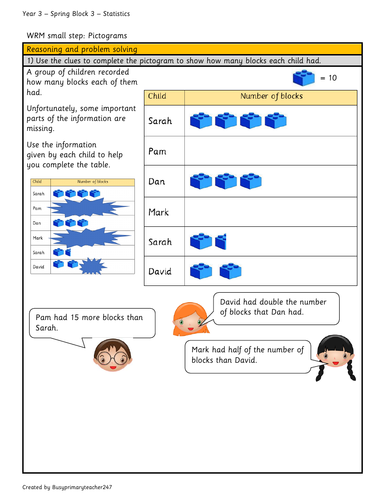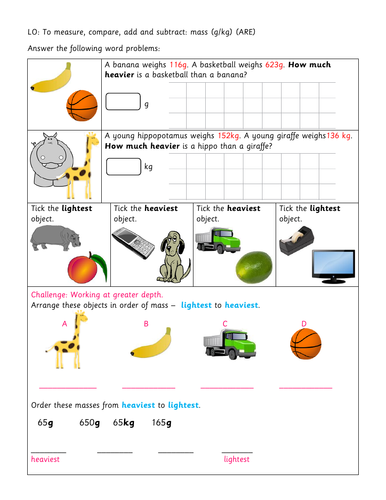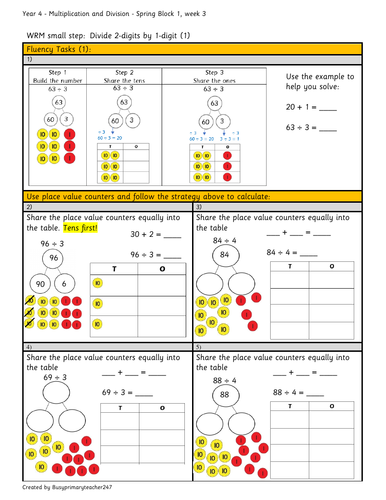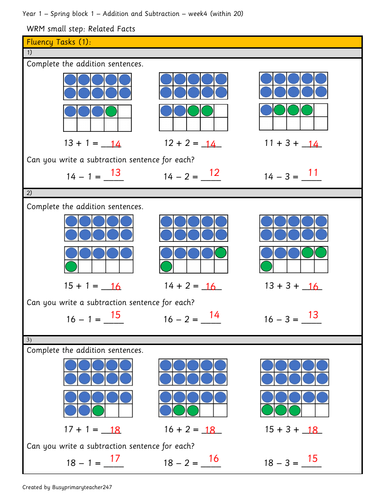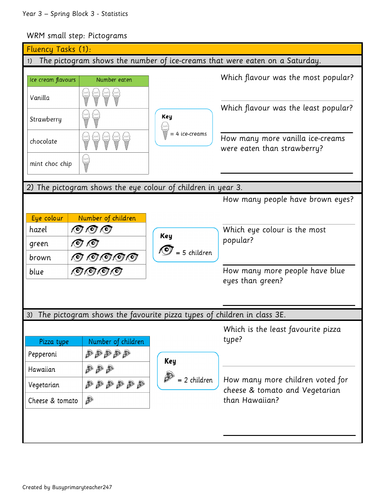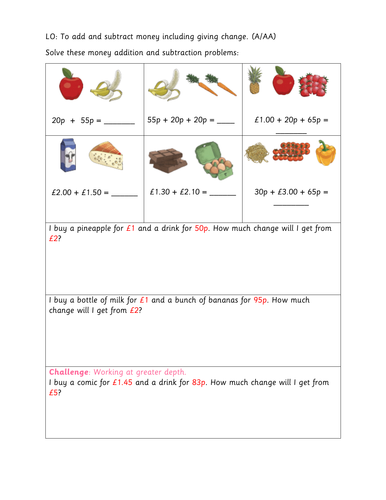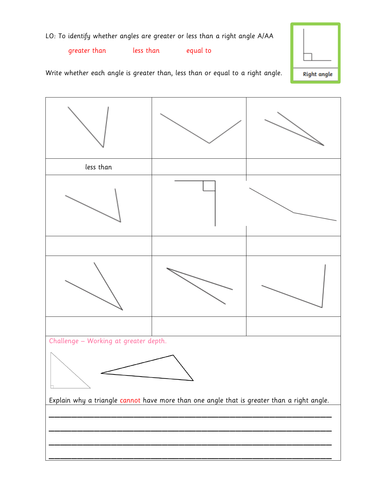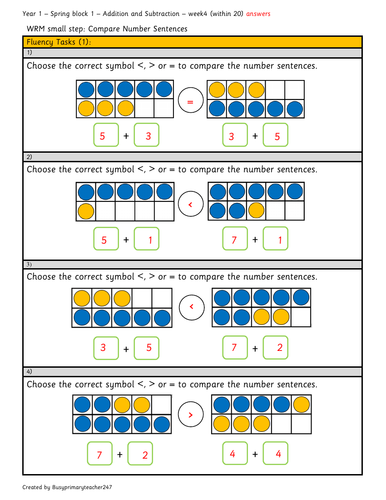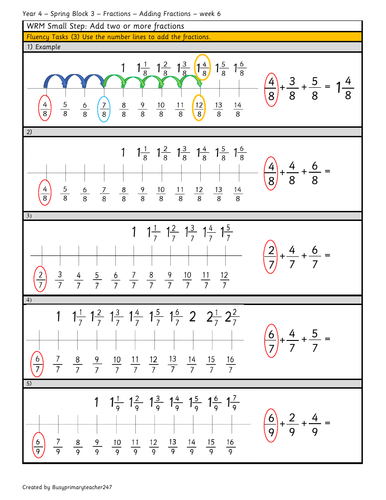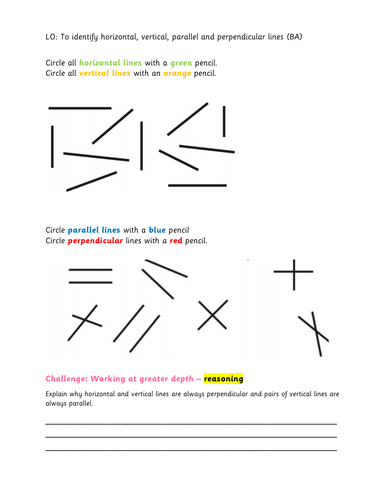132Uploads
175k+Views
66k+Downloads
Math

Year 1 Counting in 5s
This resource contains varied fluency worksheets that allow children to practise the skill of counting in 5s using concrete, pictorial and abstract methods. Also included, are reasoning and problem-solving questions, and answer sheets.
WRM links: Year 1 Spring Block 2, Number, Place Value, Numbers within 50 (week 7)
Small Step: Count in 5s
Curriculum Links
• Count to 50 forwards and backwards, beginning with 0 or 1, or from any number.
• Count, read and write numbers to 50 in numerals.
• Given a number, identify one more or one less.
• Identify and represent numbers using objects and pictorial representations including the number line, and use the language of: equal to, more than, less than (fewer), most, least.
• Count in multiples of twos, fives and tens.
I hope you find this resource useful.
Enjoy x

Year 3 - interpreting pictograms (2)
This resources enables children to read and interpret information from pictograms, make comparisons and ask questions about data. It includes worksheets linked to WRM fluency tasks 1 & 2 and reasoning questions.
WRM Small Step: pictograms
Curriculum links:
-Interpret and present data using bar charts, pictograms and tables.
-Solve one-step and two-step questions [for example, ‘How many more?’ and ‘How many fewer?’ using information presented in scaled bar charts and pictograms and tables.
Enjoy!
Your feedback is always welcome x

Place Value - Ordering Numbers Within 50
This resource links with Year 1, Spring Block 2, Number: Place Value (within 50) and uses a concrete - pictorial -abstract method to support the teaching of ordering numbers within 50. It also includes answers.
Curriculum Links
-Count to 50 forwards and backwards, beginning with 0 or 1, or from any number.
-Count, read and write numbers to 50 in numerals.
-Identify and represent numbers using objects and pictorial representations including the number line, and use the language
of: equal to, more than, less than (fewer), most, least.
I hope you find this resource useful x

Year 1 Counting in 2s
This resource contains varied fluency worksheets that allow children to practise the skill of counting in 2s using concrete, pictorial and abstract methods. Also included, are reasoning and problem-solving questions, and answer sheets.
WRM links: Year 1 Spring Block 2, Number, Place Value, Numbers within 50 (week 7)
Small Step: Count in 2s
Curriculum Links
• Count to 50 forwards and backwards, beginning with 0 or 1, or from any number.
• Count, read and write numbers to 50 in numerals.
• Given a number, identify one more or one less.
• Identify and represent numbers using objects and pictorial representations including the number line, and use the language of: equal to, more than, less than (fewer), most, least.
• Count in multiples of twos, fives and tens.
I hope you find this resource useful.
Enjoy x

Year 4 - Subtracting fractions
This resource uses a concrete – pictorial – abstract approach to help children gain fluency and mastery.
Curriculum links:
Solve problems involving increasingly harder fractions to calculate quantities, and fractions to divide quantities, including non-unit fractions where the answer is a whole number.
Add and subtract fractions with the same denominator.
Your feedback is always welcome x

Year 3 - differentiated worksheets - length
Here are 2 differentiated worksheets based on the length of objects. It includes addition, subtraction, multiplication (integer scaling) and reasoning questions.
Curriculum links:
-Measure, compare, add and subtract: length (mm/cm/m/km)
-Compare the length of objects using mixed units (mm/cm/m/km)
-Compare the length of objects using simple scaling by integers.
I hope you find this resource useful.
Your feedback is always welcome x

Year 3 - differentiated worksheets - Mass
Here are 2 differentiated worksheets based on the weight of objects. It includes addition, subtraction, multiplication (integer scaling) and reasoning questions.
Curriculum links:
-Measure, compare, add and subtract: mass (g/kg)
-Compare the mass of objects using mixed units (g/kg)
-Compare the weight of objects using simple scaling by integers.
I hope you find this resource useful.
Your feedback is always welcome x

Year 4 - Divide 2-digits by 1-digit numbers
This resource links to Year 4, Spring, block 1(week 3) Multiplication, and Division and small step 'Divide 2-digits by 1-digit numbers'
The contents include differentiated worksheets (and answers) that follow the concrete, pictorial and abstract method for maths mastery. They also include reasoning and problem-solving.
Curriculum links:
- Recall and use multiplication and division facts for multiplication tables up to 12 ×12.
- Use place value, known and derived facts to multiply and divide mentally, including multiplying by 0 and 1; dividing by 1; multiplying together three numbers.
- Recognise and use factor pairs and commutativity in mental calculations.
-Solve problems involving multiplying and adding, including using the distributive law to multiply two digit numbers by one digit, integer scaling
problems and harder correspondence problems such as n objects are connected to m objects.
I hope you find these useful,
Your feedback is always welcome x

Year 1 - Spring block 1 - Addition and Subtraction - Related facts (week 4)
This 11-page resouce follows the concrete-pictorial-abstract approach to Maths Master and also includes answers.
Linked to small step 'Related facts' for week 4, Spring block 1.
Curriculum links:
-Represent and use number bonds and related subtraction facts within 20 -Read, write and interpret mathematical statements involving addition (+), subtraction (-) and equals (=) signs.
-Add and subtract one-digit and two-digit numbers to 20, including zero. -
Solve one-step problems that involve addition and subtraction, using concrete objects and pictorial representations, and missing number problems such as 7= ꙱–9
I hope you find this resource useful,
Your feedback is always welcome :)

Year 3 - interpreting pictograms (1)
This resources enables children to read and interpret information from pictograms, make comparisons and ask questions about data.
WRM Small Step: pictograms
Curriculum links:
-Interpret and present data using bar charts, pictograms and tables.
-Solve one-step and two-step questions [for example, ‘How many more?’ and ‘How many fewer?’ using information presented in scaled bar charts and pictograms and tables.
Enjoy!
Your feedback is always welcome x
Edited
Error on Q4 has been corrected.

Year 3 - To add and subtract money including giving change
Worksheet focusing on adding and subtracting money.
Matches Rising Star's Objective: To add and subtract money including giving change.
Includes working at greater depth question

Year 3 - Greater than less than a right angle differentiated assessment
Worksheet / assessment focusing on angles being greater than or less than a right angle. Differentiated into BA and A/AA (Includes greater depth question)
Links to Rising Stars Objectives: Identify angles greater than or less than a right angle.

Year 3 - counting up and down in tenths
Differentiated worksheets based on the National Curriculum and Rising Stars objectives:
- Count up and down in tenths.
- Understand that tenths are objects or quantities divided into ten equal parts.
Includes greater depth question.

20 open-ended Math challenge questions suitable for KS2
20 open-ended Math challenge questions suitable for KS2 and great for stretching high achievers. Covers a range of Maths topics including place value, addition and subtraction and fractions.

Year 1 - Addition and Subtraction (within 20) - block 1 - Spring (week 1)
These resources cover Year 1 - Addition and Subtraction (within 20) - block 1 - Spring (week 1).
They follow the CPA approach to mastery and link to the first two WRM small steps: 'Add by counting on' and 'Find and make number bonds'.
National Curriculum links:
- Represent and use number bonds and related subtraction facts within
20
- Read, write and interpret mathematical statements involving addition (+), subtraction (-) and equals (=) signs.
- Add and subtract one-digit and two-digit numbers to 20, including zero.
- Solve one-step problems that involve addition and subtraction, using concrete objects and pictorial representations, and missing number problems such as 7= ꙱ –9
Enjoy!
Your feedback is always welcome x

Year 2 - WRM Spring Block 2 - Statistics - week 3 - Making Pictograms (1:1)
This resource covers Small step 2 of the WRM Spring block 2 (Statistics) Making Pictograms (1:1)
The worksheets are differentiated 2 ways and include answers.
I've also added the reasoning questions for this step and an extension task that allows children to make their own.
Curriculum Links:
-Interpret and construct simple pictograms, tally charts, block diagrams and simple tables.
I hope you find this useful!
Your feedback is always welcome x

Year 1 - Spring block 1 - compare number sentences (week 4)
This 5-page resource follows the concrete-pictorial-abstract approach to Maths Mastery and also includes reasoning and answers.
Linked to small step 'number sentences' for week 4, Spring block 1.
Curriculum links:
-Represent and use number bonds and related subtraction facts within 20 -Read, write and interpret mathematical statements involving addition (+), subtraction (-) and equals (=) signs.
-Add and subtract one-digit and two-digit numbers to 20, including zero. -
Solve one-step problems that involve addition and subtraction, using concrete objects and pictorial representations, and missing number problems such as 7= ꙱–9
I hope you find this resource useful,
Your feedback is always welcome :)

Year 4 Count in fractions
This resource links to the WRM Spring block 3 Fractions unit and focuses on adding fractions with the same denominator. As requested, I have included more fluency and reasoning questions.
National curriculum links:
Solve problems involving increasingly harder fractions to calculate quantities, and fractions to divide quantities, including non-unit fractions where the answer is a whole number.
Add and subtract fractions with the same denominator.
Enjoy x

Statistics - Bar Charts (edited)
This resource contains varied fluency questions, reasoning and a challenge question. Differentiated 2 ways and includes answers. Linked to Year 3 Spring block 3. Statistics - WRM Small Step - bar charts.
Curriculum links
Interpret and present data using bar charts, pictograms and tables.
Solve one-step and two-step questions [for example, ‘How many more?’ and ‘How many fewer?’] using information presented
in scaled bar charts and pictograms and tables.

Year 3 - Identifying horizontal, vertical, parallel and perpendicular lines
Worksheet / assessment focusing on identifying horizontal, vertical, parallel and perpendicular lines. Differentiated BA and A AA (Includes Greater depth question)
Links with Year 3 National Curriculum and Rising Stars objectives.


